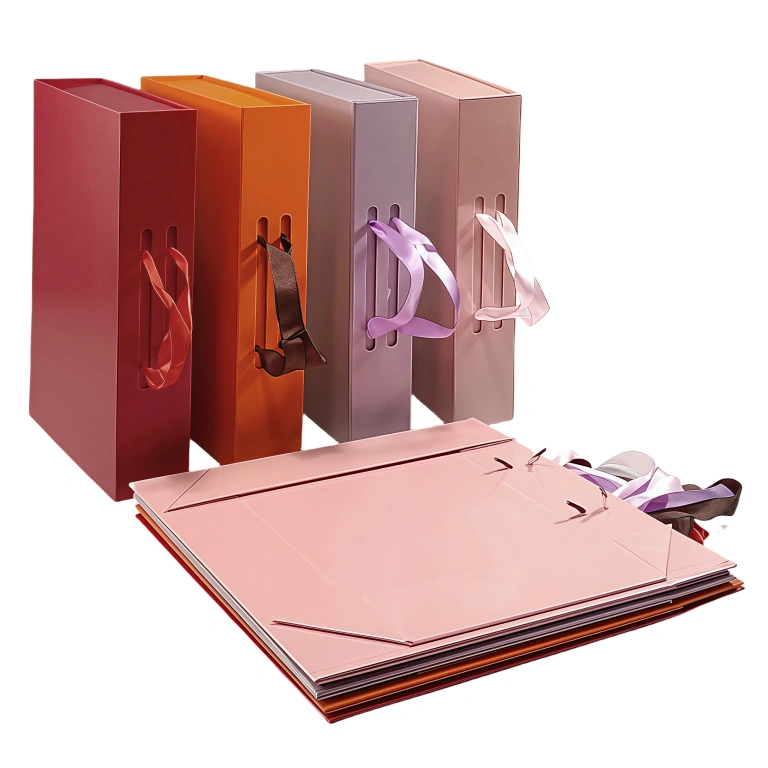Plastic vs Paper Packaging: The Pros and Cons
In today’s world, we constantly have to choose from a variety of packaging materials. When shopping, shipping products, or packing food, we often face a common choice: paper or plastic.
Both have their advantages and weaknesses. Understanding their environmental impacts and practical uses matters for making wise decisions. This blog will look into the paper-plastic packaging debate, covering their environmental problems and cost-effectiveness.

Paper Packaging: A More Sustainable Option?
People have long considered paper-based packaging an environmentally friendly alternative to plastic. Trees provide paper, which people often market as a renewable resource. Paper packaging’s main benefit is recyclables. People often make paper bags, boxes, etc. from recycled materials, thus reducing the need for new resources.
Pros of Paper Packaging:
- Renewable Resources: Paper is produced from trees, which are renewable resources. If people manage forests responsibly, they can make paper production sustainable.
- Recyclable and Compostable: Unlike plastic, people can easily recycle paper packaging, thus reducing the need for new raw materials. Moreover, paper is compostable quickly in the environment, while plastic takes thousands of years to break down.
- Paper packaging usually has a lower carbon footprint than plastic, especially when made from recycled paper. People require less plastic production for paper packaging and they often source the materials from certified sustainable forests.
- Environmentally Friendly: Paper is less likely to harm wildlife if it is discarded in nature. Additionally, people do not derive it from fossil fuels, which are finite resources contributing to environmental degradation.
Cons of Paper Packaging:
- Energy Intensive Production: Despite being a renewable resource, the production of paper requires a significant amount of energy. The process of pulping wood and transforming it into paper can be energy-intensive and lead to carbon emissions.
- Forest Clearance Risks: Responsible paper sourcing can lead to forest loss, affecting biological diversity and carbon storage. However, we can mitigate this with sustainable forestry practices.
- Limited Durability: Paper isn’t as durable as plastic, especially in wet or heavy-duty situations. Paper bags and boxes can tear more easily and are less effective in wet or humid environments.
- Cost: Paper packaging may cost more than plastic, owing to higher transport costs from its greater weight and bulk. This can make it less cost-effective in certain industries.
Plastic Packaging: Convenience at What Cost?
Plastic packaging has been a staple in modern packaging materials because of its multi-functionality and low cost. People can mold it into almost any shape, making it ideal for packaging everything from food to electronics. However, its widespread use has led to significant environmental concerns.
Pros of Plastic Packaging:
- Lightweight & Cost-Effective: Plastic packaging’s low weight cuts shipping costs. Its lightweight nature also makes it cheaper to produce and transport compared to paper packaging.
- Durability: Plastic is incredibly durable and resistant to moisture, making it ideal for food packaging and other sensitive materials. It helps preserve products safe and intact during transportation and storage.
- Flexibility: People can mold plastic into any shape, offering immense flexibility in design. This makes it suitable for a wide range of packaging products, from bottles and bags to films and wraps.
- Energy-Efficient Production: Plastic production uses less energy than paper, making manufacturing more cost-effective.
Cons of Plastic Packaging:
- Environmental Impact: Plastic’s primary downside is its environmental impact. People produce plastic from fossil fuels, and they cannot compost it. It can take thousands of years to break down in landfills, contributing to long-term pollution.
- Non-Renewable: The production of plastic depends on fossil fuels, which are finite resources. People raise concerns about the durability of plastic packaging as they deplete these resources.
- Wildlife Harm: Discarded plastic threatens wildlife, as animals may mistake it for food and choke or ingest it. Moreover, plastic waste in the oceans has become a pressing global issue.
- Recycling Challenges: People can technically recycle plastic, but they recycle only a small percentage of plastic packaging. Recycling plastic can be complex and costly, and not all plastics are easily reusable.
A Balanced Perspective: Paper and Plastic Packaging
When deciding between paper and plastic packaging, it’s important to consider the specific application and environmental impact. For example, packaging made of recycled materials or compostable offers a more sustainable option, be it paper or plastic.
In industries needing moisture resistance and durability, like as frozen foods or liquids, plastic may be the best choice. However, for general consumer goods or products where compostable is important, paper and cardboard can be a better solution. The key is to find a sustainable packaging solution that minimizes waste and environmental impact.
Conclusion
Ultimately, the choice between paper and plastic packaging depends on factors like environmental impact, cost, and durability. Paper, made from renewable resources and compostable, can still harm the environment if sourced without durability. Plastic is cheaper and more durable but causes long-term environmental issues because of fossil fuel use and persistence.
As consumers and industries seek more sustainable packaging, the move to eco-friendly solutions will grow. Packaging’s future may combine paper and plastic with innovations in compostable and recyclable options to cut emissions and impact. When choosing paper or plastic, consider long-term consequences for a greener future.



